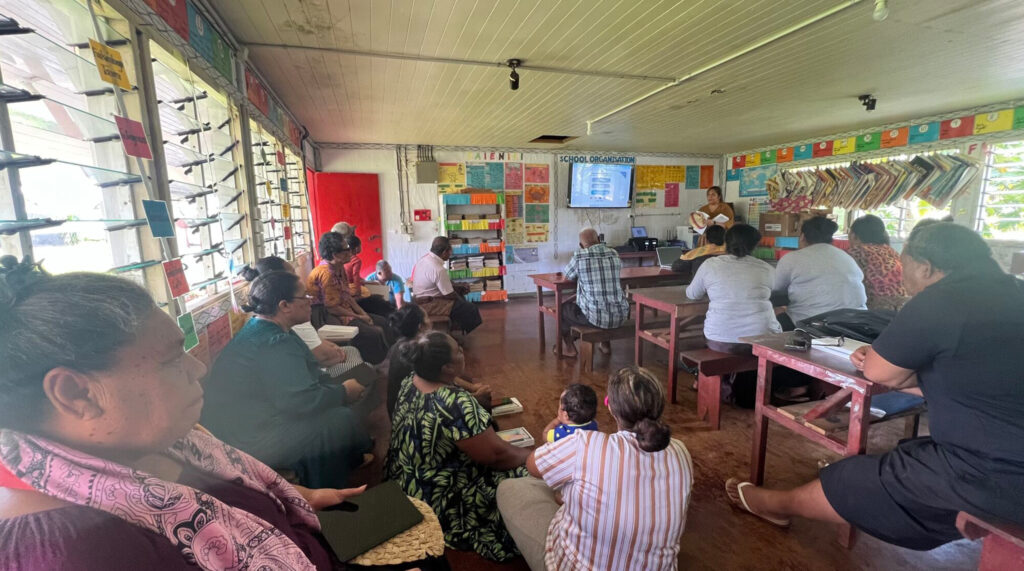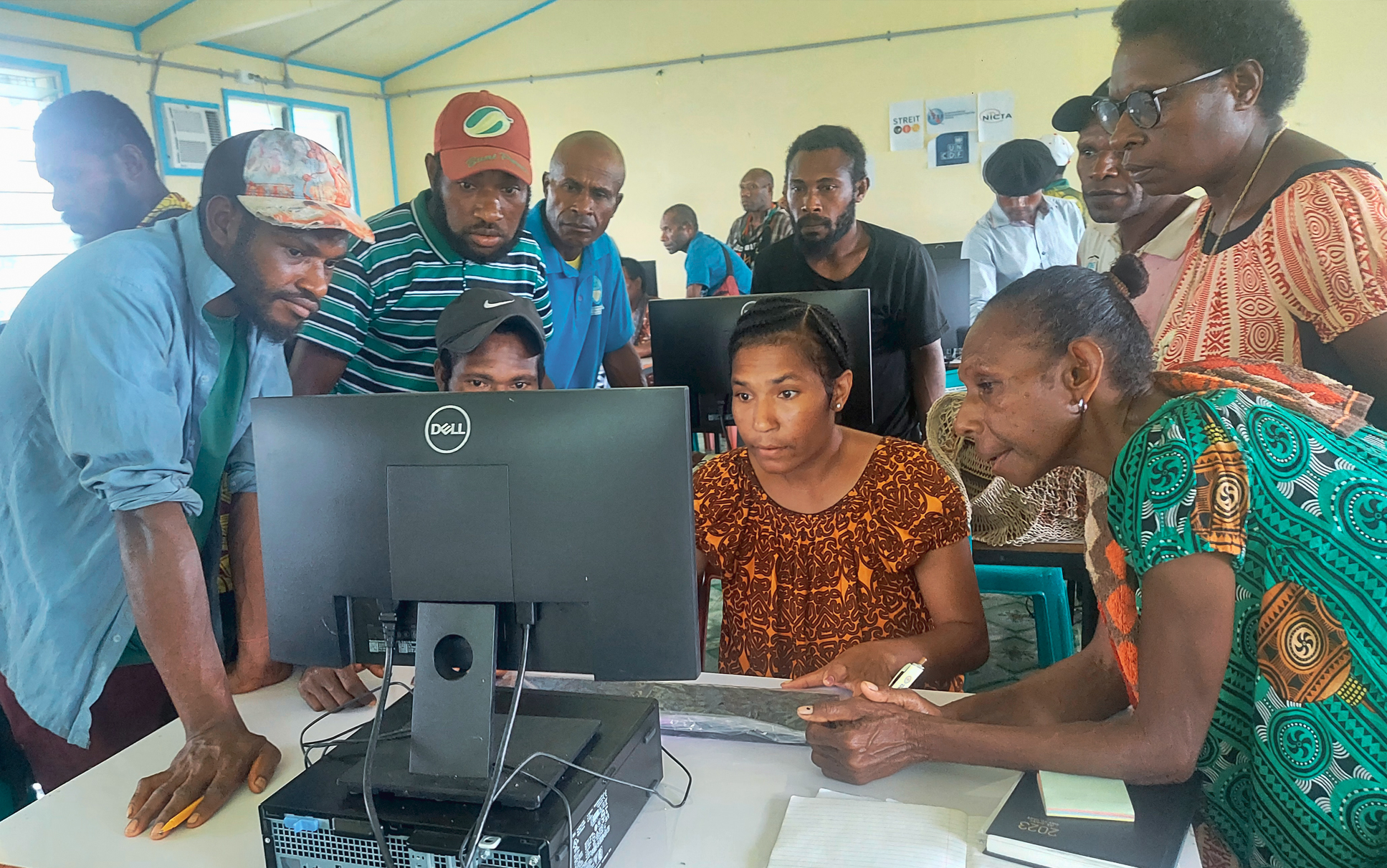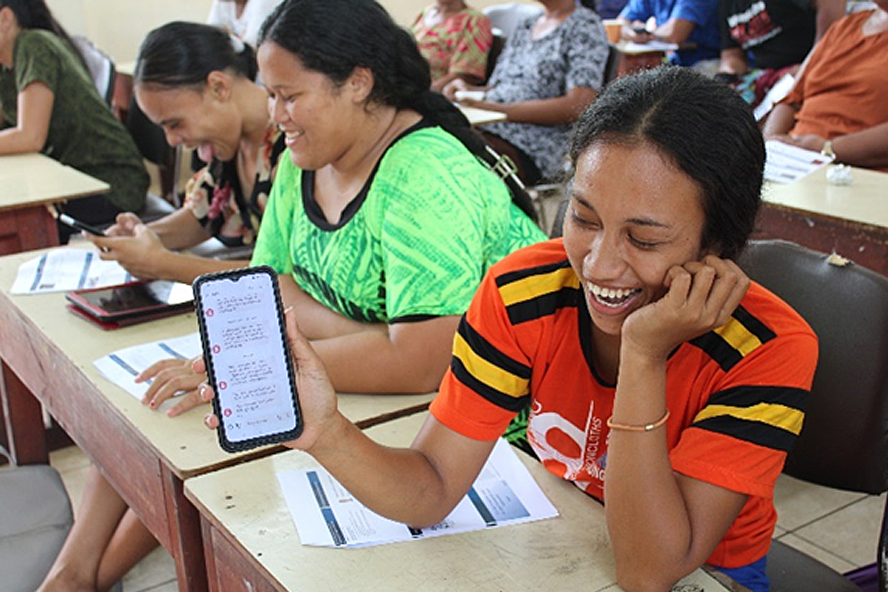
Digital Hub brings new opportunities to a remote Tongan island
Just a year ago, residents of the remote Tongan island of Hunga would gather at a certain spot near a school fence school in hopes of connecting to the Internet with their mobile phones. The 3G connection was fickle – too slow for video calls, e-banking, or using the Internet without lots of streaming interruptions – but it was the best available.
“You’re connected, but somehow you’re still unconnected,” said Mr. Stan Ahio, acting Director for Communications and Chief Engineer at the Ministry of Meteorology, Energy, Information, Disaster Management, Environment, Climate Change and Communications (MEIDECC), Kingdom of Tonga.
Connectivity has improved dramatically since then with the installation of Hunga’s Digital Hub in a primary school building. The island’s residents now have regular access to high-speed broadband Internet, laptops, tablets, printers, big screens, teleconferencing, and instruction on using those tools and connectivity to make major improvements in their lives.


Hunga’s Digital Hub in Tonga was launched as part of ITU Smart Villages and Smart Islands initiative, under the Joint SDG Fund Programme. It was implemented by ITU’s Telecommunication Development Bureau together with the Ministry of MEIDECC of the Kingdom of Tonga and UNOPS.
A digital hub is a centralized platform that provides access to digital services, resources, and connectivity for a community. It aims to broaden digital inclusion and promote economic and social development.
In Hunga’s two primary schools – with their total enrolment of 33 children – teachers no longer rely solely on often-outdated school documents and textbooks and their own knowledge. They have all the learning resources of the Internet to enrich their classrooms, to update their qualifications, and to improve communications with the Tonga Ministry of Education. For the first time, online school is available for older students when seas are too rough for them to make the boat trip to the high school on the main island of Vava’u.
Mr. Ahio said a ripple of effect of good consequences has followed the launch of the Hub. For example, the island’s only primary-school teachers, who are a couple, were able to cancel their plans to move away from Hunga so their daughter could attend high school. The Hub has made it possible to add the first year of high school to the educational offerings in Hunga, not only for their daughter but for other students that age.

Many practicalities of life are also suddenly much easier. The Hub’s excellent connectivity has made e-banking possible, a welcome development for the seven of 10 Hunga households that rely on regular money transfers from families and friends abroad to make ends meet. Hunga residents no longer need to buy a boat ticket and expend several hours to get their funds. Women’s groups are also avoiding trips, instead using the Hub’s conferencing facilities to connect across the archipelago.
Businesses are also feeling the advantages of connectivity. Mr. Ahio said people selling local products – things like handicrafts, seafood, produce – are finding buyers for their goods through Facebook marketplace before travelling all the way to the main island in hopes of making a sale. New prospects are appearing for reaching international markets with products such as vanilla and coconuts.
Hunga is just getting started on its digital transformation; by June, the island hopes to have extended the Hub’s connectivity to the town hall and health centre using fibre optic cables.
This is an ITU Development #DigitalImpactUnlocked story
About the project
The launch of the Digital Hub in Tonga is part of the Advancing the SDGs by Improving livelihoods and resilience via economic diversification and digital transformation project, under the umbrella of the ITU’s Smart Villages and Smart Islands (SVSI) initiative. The initiative is designed to provide affordable connectivity and sustainable digital services to remote communities in developing countries. It aims to improve the well-being and livelihoods of people by empowering them with digitally enabled solutions and skills that address their daily needs.
Also read

Digital training empowers vanilla farmers in Papua New Guinea to find new markets
Discover more

Charting the course for a prosperous ‘Smart Samoa’
Discover more

Building digital skills to accelerate economic prosperity – A remarkable story of knowledge sharing and per learning from Papua New Guinea
Discover more

Digital training empowers vanilla farmers in Papua New Guinea to find new markets
Discover more